If you are looking for a new DSLR camera, you may be wondering whether to go with the Canon EOS 80D or the Canon EOS 90D. Both of these cameras are excellent choices, but they have some key differences that may make one better for your needs than the other. In this article, we will compare and contrast the two cameras to help you decide which is right for you.
Why Choose Canon EOS 80D?
It features a 24.2-megapixel APS-C CMOS sensor, along with a DIGIC 6 image processor, allowing it to capture stunning photos and videos with impressive clarity and detail. The 80D also has an improved autofocus system with 45 all cross-type points for tracking subjects quickly, along with 100% coverage of the viewfinder area. In addition to capturing stunning still images and video, the 80D’s built-in Wi-Fi connection allows you to transfer your creations wirelessly from your camera directly to compatible devices or popular social media sites such as Facebook or Instagram.

Why Choose Canon EOS 90D?
The camera has a 32.5 megapixel CMOS sensor, allowing for detailed images with less noise. It also has an improved autofocus system with 45 cross-type points for fast and accurate focusing in both photos and videos. Furthermore, the 90D can record high quality 4K video at up to 30fps or 1080p video at up to 120fps for slow motion shots. Furthermore, the camera is equipped with a 3-inch vari-angle touchscreen LCD panel, making it easier than ever to compose shots. [1]
Canon EOS 80D vs.Canon EOS 90D: Features
Sensor
The 90D trumps the 80D with a 32.5 MP APS-C CMOS sensor while the latter only has 24.2 MP.
Autofocus
Both cameras feature 45 autofocus points and Dual Pixel AF technology for quick and accurate focusing, but the 90D offers an improved max burst rate of 10 fps compared to 7fps on the 80D.
Video
The Canon EOS 80D can shoot Full HD 1080p video at 60fps while the 90D has been upgraded to 4K UHD quality at 30 fps.
Image Processor
While both models feature DIGIC 6+ processors, the 90D’s processor is more powerful, allowing it to shoot faster and with improved image quality.
LCD Screen
The LCD screens on the two models are similar, though the 90D features a slightly larger 3-inch touchscreen compared to the 80D’s 3-inch non-touchscreen display.
Connectivity
The Canon EOS 90D offers built-in Wi-Fi, Bluetooth and NFC for easy connectivity, while the 80D requires an optional wireless accessory in order to connect to these networks.
ISO range
The Canon EOS 80D has an ISO range of 100-16,000 while the 90D offers a more impressive range of 100-25,600.
Metering zones
The Canon EOS 80D has 63 metering zones while the 90D has an improved 91 metering zones. [2]
Viewfinder
The viewfinder on the 90D is larger, brighter, and offers a better resolution than that of the 80D.
Memory card slots
Both cameras offer dual memory card slots, one for SD and one for CF.
LCD
The LCD on the 90D is larger and sharper than that of the 80D, making it easier to review images and adjust settings.
Max burst rate
The 90D has an improved max burst rate of 10 fps compared to the 7fps offered by the 80D.
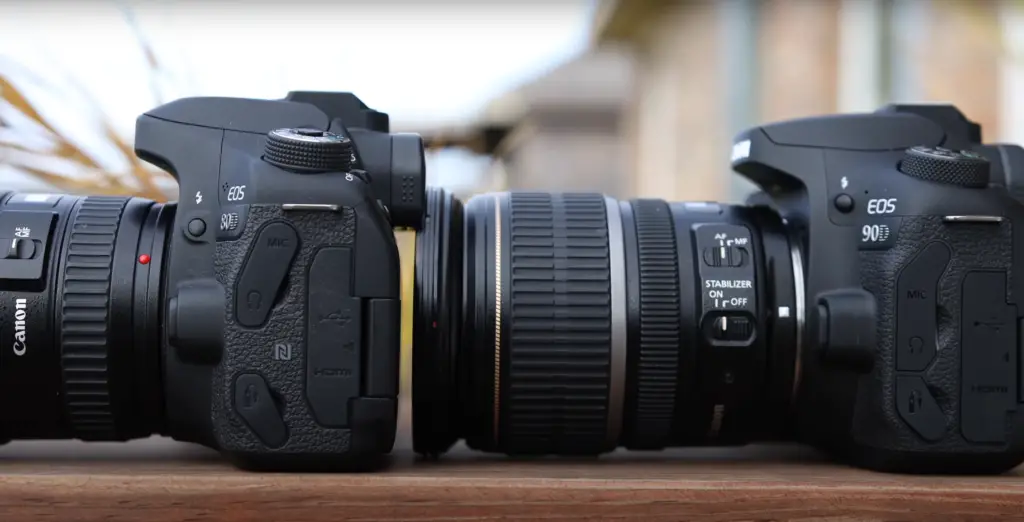
Size and Weight
The Canon EOS 90D is slightly larger and heavier than the 80D.
Canon EOS 80D vs.Canon EOS 90D: Build And Handling
When it comes to build and handling, the Canon EOS 80D is a well-built camera with good ergonomics. The body feels solid and has a large grip that’s comfortable to hold. There are plenty of buttons and dials on the exterior for fast access to settings during shooting, as well as a top display panel which shows important shooting information without needing to access the LCD screen or viewfinder.
The body is slightly larger than the 80D but it still fits comfortably in your hands. It too has plenty of external buttons and controls for direct access when shooting and its rear LCD flip out monitor is perfect for low angle and selfie shooting. [3]
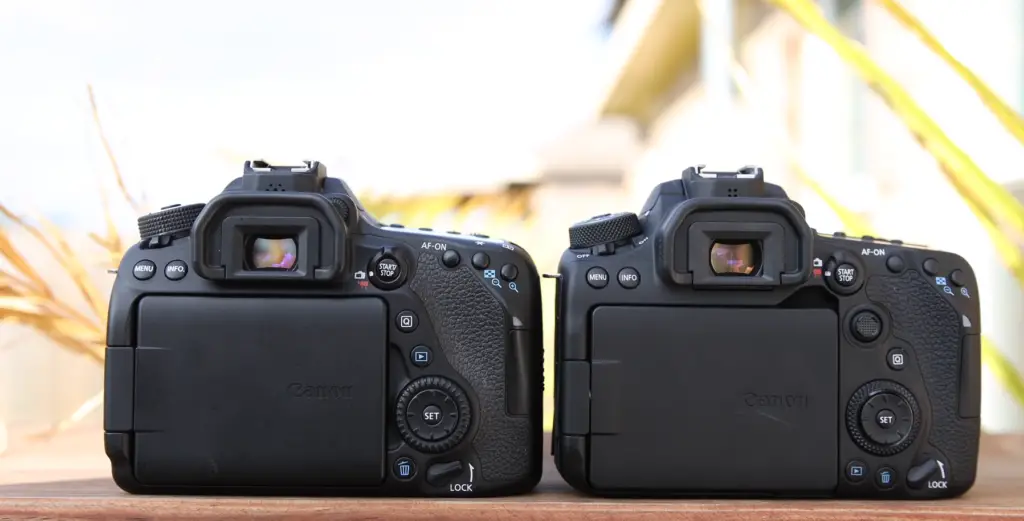
Canon EOS 80D vs.Canon EOS 90D: Lab Results
When it comes to lab results, the Canon EOS 80D and 90D are both very capable cameras. The 80D has a 24-megapixel CMOS sensor which produces excellent detail in photos and video with good color accuracy. It also has an impressive autofocus system which tracks subjects well even when they move quickly.
Canon EOS 80D vs.Canon EOS 90D: Portability
The Canon EOS 80D and 90D are both quite portable cameras. The 80D is slightly smaller in size than the 90D and weighs just over 1 lb (0.45 kg), making it easy to carry around all day without getting fatigued. It’s also a great camera for travel since it offers good image quality without taking up too much room in your bag or luggage.
Canon EOS 80D vs.Canon EOS 90D: Ergonomics & Comfort
The 80D and 90D both offer comfortable ergonomics. The 80D has a large grip which makes it easy to hold and its external buttons are conveniently located for easy access when shooting. The 90D’s body is slightly larger than the 80D’s, but it still has an excellent grip which is comfortable to hold even for long periods of time.
Canon EOS 80D vs.Canon EOS 90D: Ease of Use
Both the Canon EOS 80D and 90D are easy to use, even for beginners. The 80D has an intuitive menu system which is easy to navigate, as well as a helpful in-camera guide which explains how to use different settings and functions. The 90D also has an intuitive menu system, but it adds more advanced features such as dual pixel autofocus and 4K video recording.
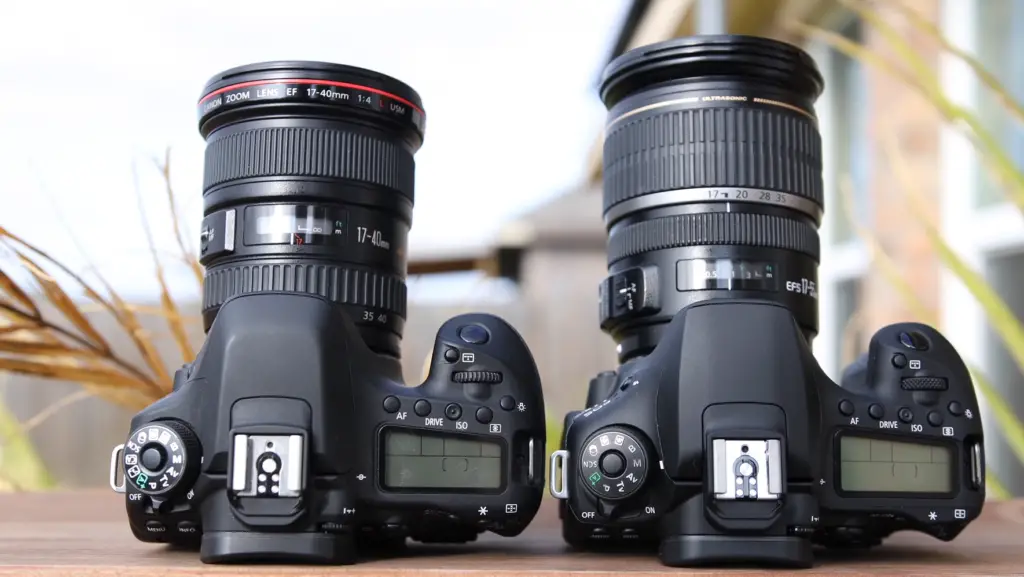
Canon EOS 80D vs.Canon EOS 90D: Pros And Cons
When considering which Canon DSLR is right for you, it’s important to understand the advantages and disadvantages of both the 80D and 90D.
The Canon EOS 80D has a 24.2-megapixel sensor that captures stunning photos with excellent dynamic range, allowing you to capture all the details in a scene. It also has an improved autofocus system with 45 focus points, giving you more precise focusing control when shooting action shots or portrait photography. The 80D also comes with built-in Wi-Fi and NFC connectivity so you can quickly share photos online or transfer them to other devices.
On the downside, the 80D doesn’t have 4K video recording capabilities like its successor, the 90D. It also has a slightly slower burst shooting rate of 7 fps compared to 10 fps on the Canon EOS 90D.
It also has a much faster burst shooting rate of 10 fps compared to 7 fps on the 80D, making it ideal for capturing fast-moving action shots. The 90D also comes with built-in Wi-Fi and NFC connectivity as well as Bluetooth Low Energy capability so you can quickly transfer photos and videos to other devices.
On the downside, the Canon EOS 90D doesn’t have the same level of dynamic range as the 80D. It also lacks some of the creative features that are available on the 80D, such as multiple exposure and HDR mode.
Overall, both cameras offer excellent image quality, but depending on your needs, one may be better suited for you than the other. If you’re looking for a camera with great dynamic range and versatile autofocus system for still photography, then the Canon EOS 80D is a solid choice. However, if you need 4K video recording capabilities or faster burst shooting rates for action shots, then the Canon EOS 90D may be more suitable for you. Whichever DSLR you choose, make sure to do your research and read reviews before making your purchase. That way, you can be sure that you’re getting the right camera for your needs. [4]
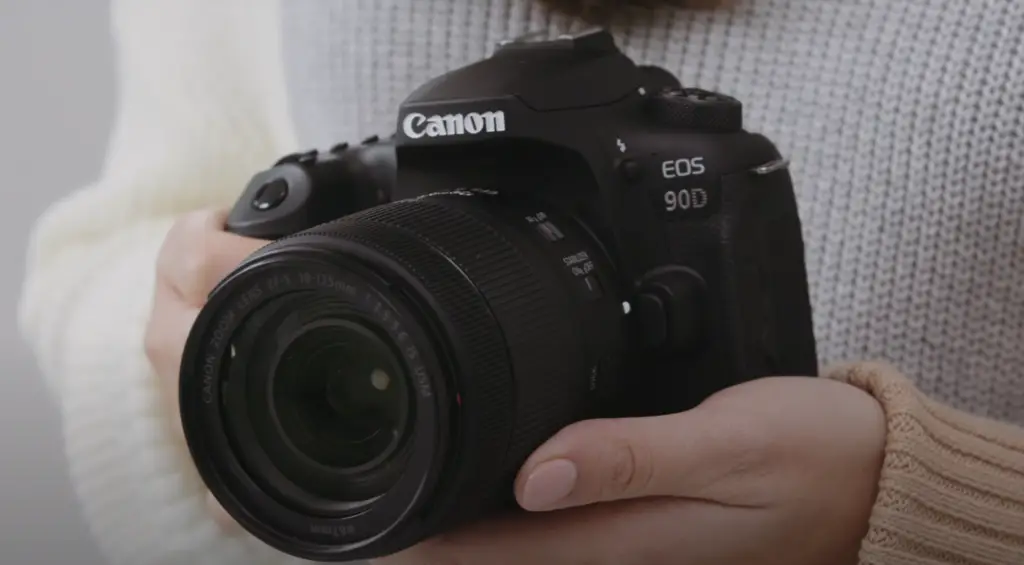
Alternatives to Nikon Canon EOS 80D and Canon EOS 90D
If you’re looking for an alternative to the Canon EOS 80D and 90D, there are several options available.
The Sony A7 III is a great option if you need a full-frame mirrorless camera. It has excellent image quality, fast autofocus and 4K video recording capabilities.
The Fujifilm X-T3 is another popular choice among photographers who prefer APS-C sensor cameras with an interchangeable lens system. It offers both 4K video recording as well as high-resolution stills.
Lastly, the Panasonic Lumix DC-G9 is a great choice for those who want a Micro Four Thirds camera capable of capturing stunning photos and videos in all types of lighting conditions.
When deciding which camera is right for you, it’s important to think about your budget, photographic needs and the types of photos or videos that you plan on taking. All three cameras offer distinct features and benefits, so consider your shooting style before making a purchase. Additionally, don’t forget to read up on product reviews from trusted sources in order to make an informed decision.
Canon EOS 80D vs.Canon EOS 90D: How to Maintain?
When you own a DSLR camera, proper maintenance is essential for extending its life and preserving the quality of your photos. Both Canon EOS 80D and 90D cameras offer the same features when it comes to maintenance: they are both dust and weather-resistant, have an 86k-pixel RGB+IR metering system, come with a built-in cleaning mode for sensor cleaning, and can be cleaned using a blower or lens cloth.
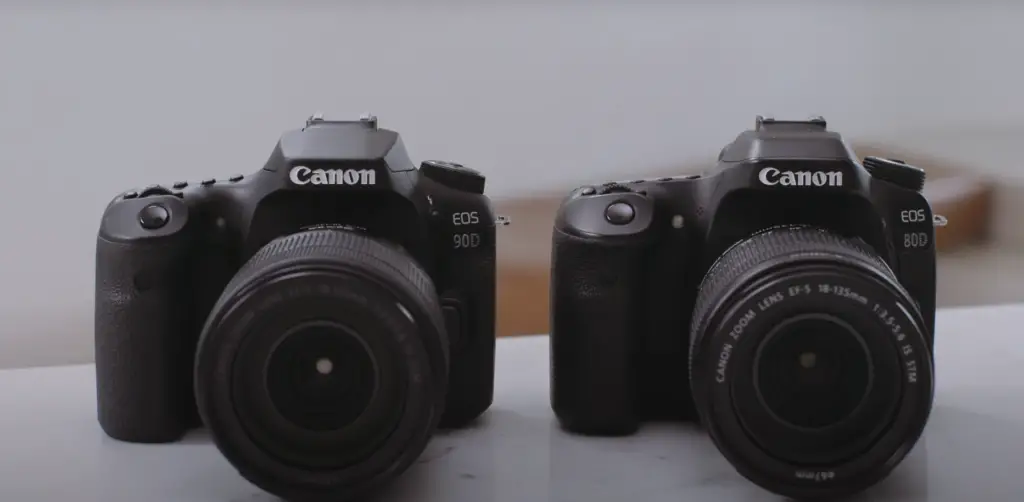
However, some differences do exist between the two models when it comes to maintenance. For instance, the 80D is slightly lighter than the 90D (849g compared to 927g), making it easier to carry around while shooting outdoors. Additionally, while both cameras feature an integrated timer for automatic shut-off, the 80D has a more advanced model with adjustable intervals and a maximum time of 8 hours.
In terms of battery life, the 90D offers up to 1,200 shots per charge compared to the 800 shots per charge on the 80D. While this may not seem like much of a difference in practice, it may be important for some photographers who need to take multiple long exposures or shoot continuously over a longer period of time.
Finally, both cameras are compatible with Canon’s range of accessories such as lens filters, external flashes and wireless transmitters. However, the 90D is compatible with additional accessories including an audio adaptor and remote control unit. This can be useful if you want to control your camera remotely or capture audio along with video.
Overall, the Canon EOS 80D and 90D offer similar features when it comes to maintenance and durability, but they do have some distinct differences which may make one model more suitable for certain types of photography than the other. Ultimately, it’s up to you to decide which DSLR is right for you based on your specific needs and shooting style. [5]
Common Things to Consider When Using a DSLR Camera
No matter which Canon EOS model you choose, there are some general tips to keep in mind when using a DSLR:
- Clean your lenses regularly to ensure the best image quality.
- Use a lens hood when shooting outdoors or in areas with bright lighting. This helps reduce lens flare and other unwanted optical effects.
- Store your camera and accessories in a padded bag or case to protect them from bumps and scratches.
- Backup photos regularly to safeguard against data loss.
- Test out different settings and experiment with various techniques to get the most out of your camera.
By following these simple steps, you can help ensure that your Canon EOS 80D or 90D will provide years of reliable service and beautiful photographs. With a little bit of care and attention, your DSLR camera can be a trusted companion for capturing all of life’s special moments. So take some time to explore the features offered by each model and find the perfect one that suits your needs.
Where to Buy?
If you’ve decided that the Canon EOS 80D or 90D are the perfect DSLR cameras for you, then you’re probably wondering where to buy them. Both models can be found at a variety of retailers both online and in-store.
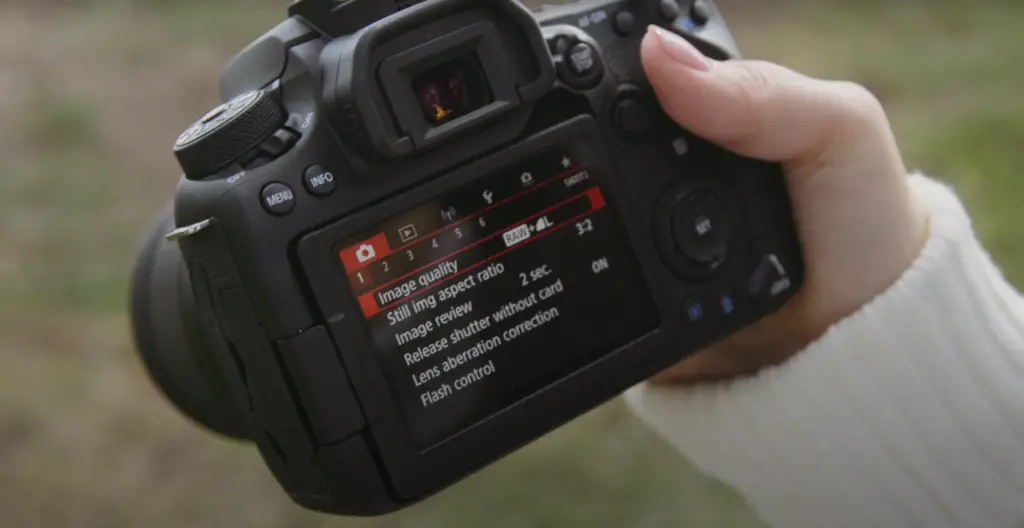
Once you purchase your camera, don’t forget to pick up some accessories such as lens filters, flashes and tripods to take your photos to the next level!
In conclusion, deciding between the Canon EOS 80D vs. 90D is a personal decision based on your unique needs and shooting style. Whichever model you choose, make sure to take care of it and invest in some accessories to help get the most out of your DSLR camera. With a little bit of research and preparation, you can be sure to pick the right one for you and start capturing beautiful photos with ease.
How to Clean a Camera?
Cameras, especially DSLRs like the Canon EOS 80D and 90D, are a significant investment. So it’s important to take good care of your camera – and that includes cleaning it frequently! Cleaning your camera will help keep it in optimal working condition while also ensuring that you get the best possible images.
The first step is to gather all of the supplies you’ll need for cleaning. This includes an air blower or can of compressed air, a lens brush, lens wipes, and a microfiber cloth. Once you have everything ready, start by using the air blower or compressed air to remove any dust particles on the exterior of the camera body and lenses. Next, use a lens brush to gently remove any residue from the lenses.
Once you’ve removed all of the dust and debris, use a lens wipe to gently clean the exterior surfaces.
Finally, use a microfiber cloth to polish and shine the body of the camera and lenses. This will help protect them against scratches and dirt accumulation.
By following these steps, you can keep your Canon EOS 80D or 90D looking like new!
FAQ
Is the 90D worth upgrading from the 80D?
The Canon EOS 90D is an impressive upgrade from the 80D, offering a new 32.5-megapixel CMOS sensor and improved autofocus system with eye detection. It also has 4K video recording capability, faster continuous shooting up to 10 fps, and a larger 3.2” LCD screen with touch capability. If you are looking for more advanced features in your DSLR camera, then the 90D would be worth upgrading to.
What type of photography can I take with the Canon EOS 90D?
The Canon EOS 90D is equipped with features that make it suitable for all types of photography needs; whether you are a beginner or an advanced photographer. The camera offers full manual control over exposure settings, allowing you to customize your shots according to your own preferences. It also has an excellent autofocus system with eye detection, making it perfect for portrait photography. Additionally, the 90D supports 4K video recording with slow motion and time-lapse capabilities, making it a great choice for videographers as well.
Is the Canon EOS 80D still worth buying?
The Canon EOS 80D is an excellent camera that has been around for several years now. The camera offers full manual control over exposure settings and an impressive autofocus system with 45 focus points and face detection AF. Although the 90D offers some improvements in terms of resolution and autofocus performance, the 80D is still a great choice for those who are on a tight budget or want an entry-level DSLR.
Is 80D for professionals?
The Canon EOS 80D is a great choice for enthusiast and amateur photographers who are looking for an affordable, entry-level DSLR camera. It has advanced features such as full manual control over exposure settings and an impressive autofocus system with 45 focus points, allowing you to take great photos even in low light conditions. However, if you are looking for more professional features and performance, then the 90D would be a better choice.
Is 90D good for beginners?
The camera also features a vari-angle touch screen LCD monitor, which allows you to easily adjust your shooting angle while still maintaining full control over your composition. Additionally, the 90D boasts 4K video recording capabilities and fast autofocus performance with 45 cross-type autofocus points – ideal for capturing fast moving subjects such as wildlife or sports. Ultimately, the 90D is an excellent DSLR choice for both beginner and experienced photographers alike who want high quality images and videos without sacrificing ease of use.
Is Canon 90D good for wedding photography?
The Canon EOS 90D is a great choice for wedding photographers. Its vari-angle touch screen LCD monitor, dual pixel autofocus system, and 4K video recording capabilities make it an excellent camera for capturing stunning images of the special day. Additionally, the camera’s 45 cross-type autofocus points allow you to quickly lock onto your subject no matter how much they move around on the dance floor or during group photos. With the 90D in your bag, your clients are sure to be thrilled with the quality of their wedding photos!
Is the Canon 80D good for low light?
Additionally, the camera’s ISO range of 100 – 16000 allows you to capture stunning images without having to worry about noise. For those looking to shoot in extremely dark conditions, the camera also offers an “Extended ISO” setting which can reach up to 25600. Ultimately, the 80D is a great choice for photographers who need excellent performance in low light situations.
What is the Canon 90D used for?
The Canon 90D is an advanced Digital Single-Lens Reflex (DSLR) camera designed for serious photographers and filmmakers. It has a 32.5 megapixel APS-C CMOS sensor with Dual Pixel autofocus technology, allowing it to capture detailed images with excellent color reproduction. The 90D also offers 4K video recording at 30 frames per second, as well as Full HD recording up to 120 frames per second for slow motion effects. Other features include a 3-inch articulating LCD touchscreen, intuitive controls and a wide ISO range of 100–25600 for low light shooting. This makes the Canon 90D perfect for capturing great shots in any environment, from sports events and wildlife photography to high quality videography projects. For those looking for a more advanced camera, the 90D is the perfect choice.
Useful Video: Canon 80D vs 90D (Is It Worth The Upgrade?)
Conclusion
When it comes to choosing a DSLR camera, there is no one-size-fits-all option. Both the Canon EOS 80D and 90D offer excellent features and capabilities that should be considered when making your decision.
The Canon EOS 80D offers incredible autofocus performance, an extensive range of creative options, and a relatively low price tag. It’s perfect for beginner and intermediate photographers who are just starting out in the world of photography or those who don’t need all the bells and whistles of professional cameras.
The Canon EOS 90D boasts improved autofocus, faster frame rates, better video capabilities, as well as more customizable controls. Professional photographers or experienced amateurs who need to shoot fast-moving subjects and frequently use video, should look no further than the Canon EOS 90D.
At the end of the day, it all comes down to what your needs are. Before making your decision, carefully consider which features are most important for you and your photography style. You’ll be sure to find a camera that fits your needs perfectly!
References
- https://cameradecision.com/compare/Canon-EOS-90D-vs-Canon-EOS-80D
- https://bestoflens.com/canon-80d-vs-canon-90d-comparison/
- https://versus.com/en/canon-eos-80d-vs-canon-eos-90d
- https://www.digitaltrends.com/photography/canon-eos-90d-vs-canon-eos-80d/
- https://photographylife.com/canon-80d-vs-90d






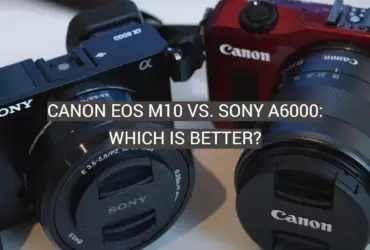

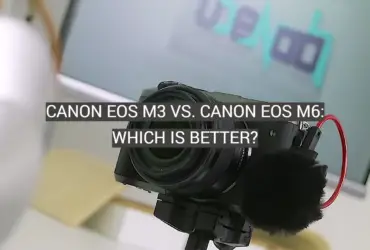
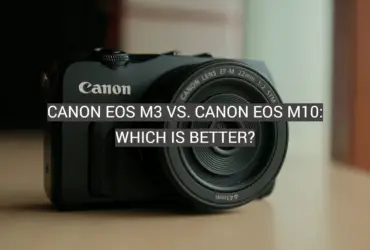

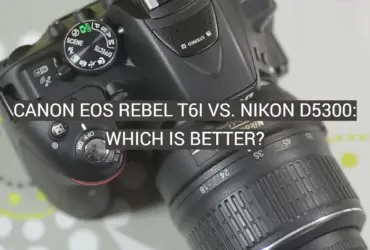
Leave a Reply